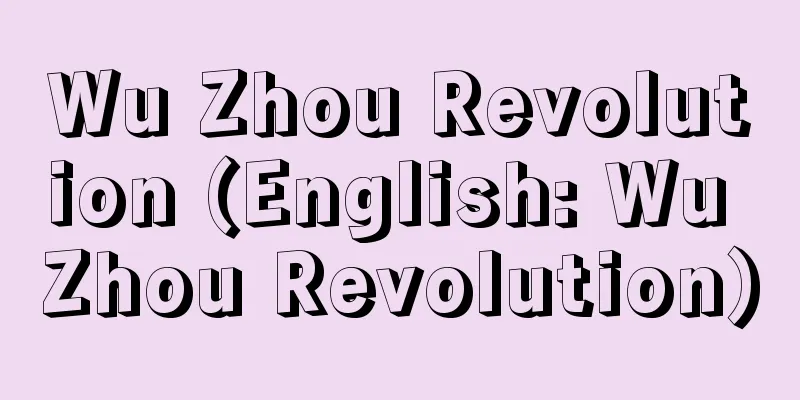Indian Independence Movement - Indian Independence Movement

|
A series of movements leading up to India's independence in 1947. It began with the emergence of a national consciousness among the Indian intellectual class, who had been influenced by European-style free thought after the Indian Rebellion of 1857-59. In 1885, the Indian National Congress was founded in Bombay, and since then, it has held party conferences in different venues every year to raise the political consciousness of the people. This nationalist movement was further intensified by radicals such as Bal Gangadhar Tilak, and in the early 20th century, it expanded into the non-cooperation with the British government, swadeshi, and swaraj movements. At the same time, in the process of the movement against the Bengal Partition Act, it clarified its anti-imperialist nature, and complete independence from Britain became the movement's greatest mission. After World War I, under the leadership of Mahatma Gandhi, Jawaharlal Nehru, and others, the nationalist movement gained a nationwide reach and popularity throughout India. During this time, Britain repeatedly used repression and compromise, and further exploited the animosity between Hindus and Muslims to foster the Indian Muslim League and attempt to divide and rule, but was unable to win the majority's support and was forced to revise the Government of India Act. The independence movement gained momentum with the Second World War, and Britain finally promised independence after the war ended. As for the method of independence, Gandhi and others advocated a unified India, but the Indian Muslim League, led by Muhammad Ali Jinnah, advocated the independence of Pakistan, and in July 1947 the British Indian Empire was dissolved by the Indian Independence Act, and in August of the same year two independent states were born: the Union of India (later the Republic of India), which was predominantly Hindu, and Pakistan, which was predominantly Muslim. Source: Encyclopaedia Britannica Concise Encyclopedia About Encyclopaedia Britannica Concise Encyclopedia Information |
|
1947年のインド独立までの一連の運動。 1857~59年のインド大反乱以降,ヨーロッパ式の自由思想の感化を受けたインド人知識階級を中心に民族的自覚が芽生えてきたことがきっかけ。 1885年にはボンベイでインド国民会議派が創設され,以来毎年会場を変えて党大会を開き,国民の政治意識の高揚を促した。この民族運動は,バール・ガンガーダルティラクなど急進派によってさらに激化し,20世紀初めにはイギリス政府への非協力,スワデーシ,スワラージ運動へ拡大した。同時に,ベンガル分割法反対運動の過程で反帝国主義的な性格を明確にし,イギリスからの完全独立が運動の最大の使命となっていった。第1次世界大戦後はマハトマ・ガンジー,ジャワハルラル・ネルーらの指導のもと,民族運動は全インド的な広がりと大衆性を獲得するにいたった。この間イギリスは弾圧と妥協を繰り返し,さらにヒンドゥー教徒とイスラム教徒の反目を利用してインド・ムスリム連盟を育成し,分割支配を試みたが大勢には勝てず,インド統治法の改定を余儀なくされた。第2次世界大戦を機に独立運動はいよいよ盛んになり,イギリスもついに戦争終結後の独立を約束した。独立の方式については,ガンジーらは統一インドを主張したが,ムハンマド・アリー・ジンナーらを中心とするインド・ムスリム連盟はパキスタンの独立を主張,1947年7月インド独立法によってイギリス領インド帝国は消滅し,同年8月ヒンドゥー教徒を主体とするインド連邦 (のちのインド共和国) と,イスラム教徒を主体とするパキスタンの二つの独立国が誕生した。
出典 ブリタニカ国際大百科事典 小項目事典ブリタニカ国際大百科事典 小項目事典について 情報 |
Recommend
chapiteau historié (English spelling)
…These capitals were inherited by Islamic archite...
Kusuba Sainin - Kusuba Sainin
Year of death: 14th February 18th of Bunmei (1486....
Acrinol - Acrinol (English spelling)
A germicidal disinfectant, also known as ethacrid...
Kosztolányi D. (English notation) KosztolanyiD
…This strengthened the ties with Ady, who lived i...
Navy Commissioner - Kaigunbugyo
A shogunate job title from the end of the Edo per...
summa
…However, it was in the so-called “12th century R...
Gyobok - Gyobok
A deciduous or evergreen tropical tree of the Capp...
Celery - selori (English spelling) celery
An annual plant of the Umbelliferae family (APG c...
Egikyoto
...bureaucrat and politician. His pen name was Ky...
roux brun (English spelling) rouxbrun
… There are two types of binders that thicken sau...
anomaloscope
...In this case, not only color vision but also e...
Decorative sword - Kazari-tachi
A type of sword used in the attire of nobles. It ...
cofradía (English spelling)
...Each village has its own unique cultural type ...
Swallowtail Butterfly - Swallowtail Butterfly
…An insect of the Lepidoptera order, the family P...
Kishibojin
(Free translation of Hārītī (Hāri 苫)) [1] In Buddh...

![Eigenji [town] - Eigenji](/upload/images/67cb03bc1467e.webp)







